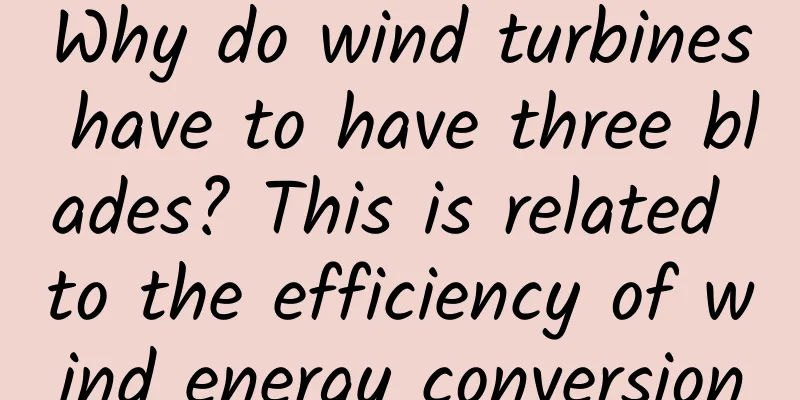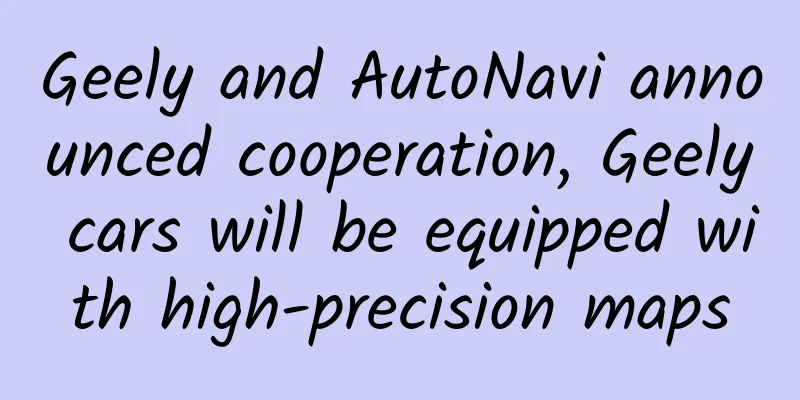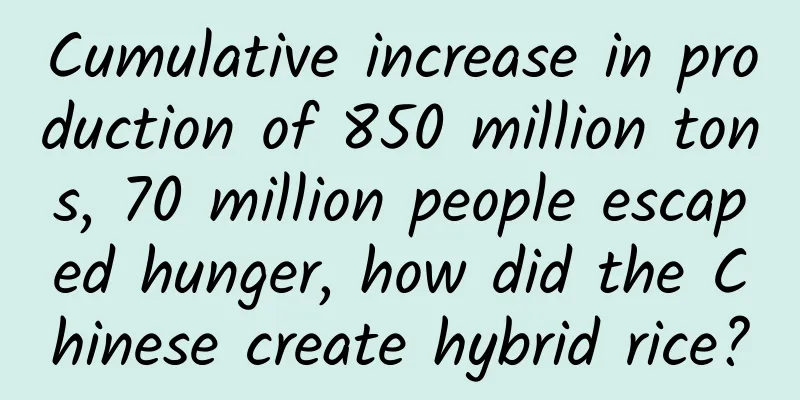Why do wind turbines have to have three blades? This is related to the efficiency of wind energy conversion

|
Old-style electric fans are composed of three blades. A few days ago, the old electric fan at home finally broke down, so I bought a new one. This fan no longer has only three blades like the traditional electric fan, but is composed of many small blades. This design does seem to be much better than the traditional electric fan. At the same time, this also made me think of another question, that is, the wind turbines used for wind power generation are all composed of three blades without exception. Why is this? Energy cannot be generated out of thin air, so wind power generation does not create electricity out of thin air. It just converts energy once, converting wind energy into electrical energy. Since it is the conversion of energy, it must involve a problem, that is, the conversion efficiency. The level of wind energy conversion rate is closely related to two factors, one is wind force and the other is wind speed. Wind energy conversion power is equal to wind force multiplied by wind speed. Now let's assume that our wind turbine has many blades, so many that they form an airtight disc. What is the wind energy conversion power at this time? Basically zero. Because when the wind turbine becomes an airtight disc, the wind force acting on the disc can indeed reach the maximum, but no wind can pass through the disc and can only go around the disc, so the wind speed acting on the disc is zero. Any number multiplied by zero is zero, so even if the wind is strong, there is no way to achieve conversion without wind speed. It can be seen that in order to convert wind energy into electrical energy, the number of blades must be reduced so that the wind can pass quickly. As the number of blades decreases, the wind speed will gradually increase, and the wind force acting on it will gradually decrease. To achieve the maximum conversion power, a balance point must be found. Now you must be thinking that since wind turbines all have three blades, it must be because when there are three blades, the wind energy conversion efficiency is the highest. This is not really the case. In fact, calculations show that the wind energy conversion efficiency is the highest when there are four blades. In this case, why do wind turbines have three blades instead of four? When we encounter a problem, if we cannot find the answer in scientific principles, then the answer must be related to another factor, that is, money. Wind turbines are not electric fans. They have to bear great forces and bending moments when working, so the materials used to make them must be very strong. The blades of modern large wind turbines usually use steel pipes or D-shaped steel as longitudinal beams and steel plates as cross beams. The inside is filled with foam plastic boards, and the outside is covered with fiberglass skins. Wind turbine blades are expensive, so adding one more blade will increase the cost sharply. In the minds of many people, wind power generation is free. After all, wind is free, so it is better to use it than not. But in fact, the cost of wind power generation must be calculated, including both the manufacturing cost of the wind turbine and the maintenance cost during use. Since the cost will increase a lot with one more blade, it is natural to calculate whether it is worth it. Obviously, the result is not worth it, so three blades have become the standard for wind turbines. Three blades are a main feature of wind turbines. In addition, wind turbines have another feature, which is "slow". No matter where it is built or how strong the wind is, the rotation speed of the wind turbine is always slow. Why is this? Generally, a wind turbine rotates at a speed of about 7 to 12 revolutions per minute. Common sense suggests that this speed cannot generate electricity, and this is indeed the case. If a wind turbine is to generate electricity, a gear mechanism must be installed inside to increase its speed. Through the speed change of the gear mechanism, the internal speed of the wind turbine can usually reach more than 1500 revolutions per minute, which is a significant improvement. Now the question is, since a high speed is required, why not just let the wind turbine blades rotate faster? Why must a gear mechanism be used for secondary speed change? Fast rotation requires a high strength of the blades, so limiting its speed is partly to avoid damage, but this is not the main reason. The wind energy conversion efficiency is related to the wind force acting on the wind turbine and the wind speed passing through the wind turbine, and the wind force and wind speed are directly related to the number of blades. However, the "number of blades" mentioned here needs to be viewed from a sports perspective. Although a wind turbine has only three blades, if the rotation speed is increased, the actual effect can be equivalent to multiple blades. For example, when the wind turbine rotates very fast, it becomes a disk that can completely block the wind. At this time, the wind speed is zero, and the wind energy cannot be converted into electrical energy. It can be seen that it is not enough to just install three blades on the wind turbine. It is also necessary to ensure that during the rotation process, its actual effect is always the effect of three blades, and it will not become four, five or more blades because it rotates too fast. For more information, please follow the official account: sunmonarch |
>>: Is edible glue really related to "glue"?
Recommend
Chengdu and Chongqing: Dinosaurs are everywhere
The Sichuan Basin lies between Chengdu and Chongq...
Dismantling Spark Education’s K12 Education Operation Growth Strategy
Today's case comes from Chen Xi, an outstandi...
Introduction and Use of Cosmetics
Introduction to cosmetics and their uses: Cosmeti...
Will oxygen inhalation during high altitude sickness lead to addiction? Here’s what you should know before traveling to high altitude areas!
gossip "When you have altitude sickness, you...
Brother Nan: The Theory of Cause and Effect Followed by Successful People
Course Contents: 01How successful people set goal...
Top 10 Smart Hardware Products of 2014 (Part 1): Stories
First of all, I want to emphasize that this is a ...
How to write a website analysis report? How to write a website diagnostic analysis report?
For website optimization SEO practitioners, after...
Case analysis: Wedding photography advertising case in WeChat Moments!
With the continuous evolution of consumption upgr...
How to restore TikTok to normal with 0 views? What are the main reasons?
Douyin is a very popular self-media video APP now...
Gansu Province's TCM Prevention and Treatment Plan for Pneumonia Infected by the New Coronavirus (Trial)
This disease belongs to the category of "epi...
Cumulative increase in production of 850 million tons, 70 million people escaped hunger, how did the Chinese create hybrid rice?
Now the area of hybrid rice in my country has e...
The sun travels 7 billion kilometers every year, so why do the stars in the Milky Way remain in the same position? You need to wait patiently~
Current observations and research by the astronom...
ENISA: 2023 AI and Standardized Cybersecurity Report
ENISA has published the "Cybersecurity Repor...
Chen Changwen's method: Confessions of a community member
Every perceptive entrepreneur should practice soc...
How to create highly sticky products? Teach you 3 models
What is CLV? You must understand this word when m...









